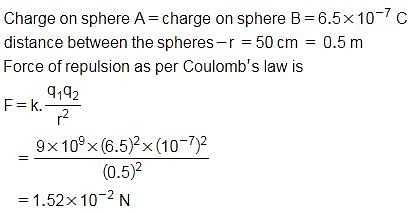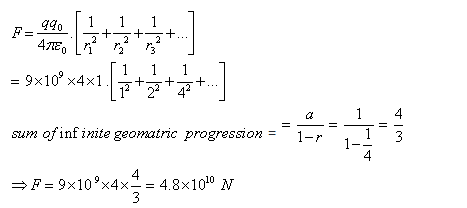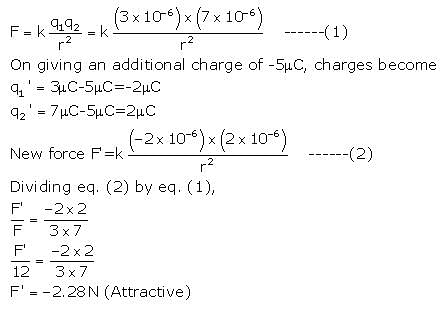Test: Coulomb's Law & Its Applications - NEET MCQ
10 Questions MCQ Test Physics Class 12 - Test: Coulomb's Law & Its Applications
Two insulated charged copper spheres A and B have their centers separated by a distance of 50 cm. What is the mutual force of electrostatic repulsion if the charge on each is 6.5×10−7 C? The radii of A and B are negligible compared to the distance of separation.
Two charges 1C and -4C exists in air. What is the direction of force?
| 1 Crore+ students have signed up on EduRev. Have you? Download the App |
Ratio of the permittivity of medium to the permittivity of free space is known as
An infinite number of charges, each equal to 4C, are placed along the x-axis at x = 1 m, x = 2 m, x = 4 m, x = 8 m and so on. The total force on a charge of 1C placed at the origin is
Two point charges 3μC and + 7μC repel each other with a force of 12 N. If each is given an additional charge -5 μC, what will be the new force between them?
Under the influence of the coulomb field of charge +Q, a charge −q is moving around it in an elliptical orbit. Find out the correct statement(s).
The force between two charges is 120 N. If the distance between the charges is doubled, the force will be
When the distance between two charged particle is halved, the force between them becomes
|
105 videos|425 docs|114 tests
|





















